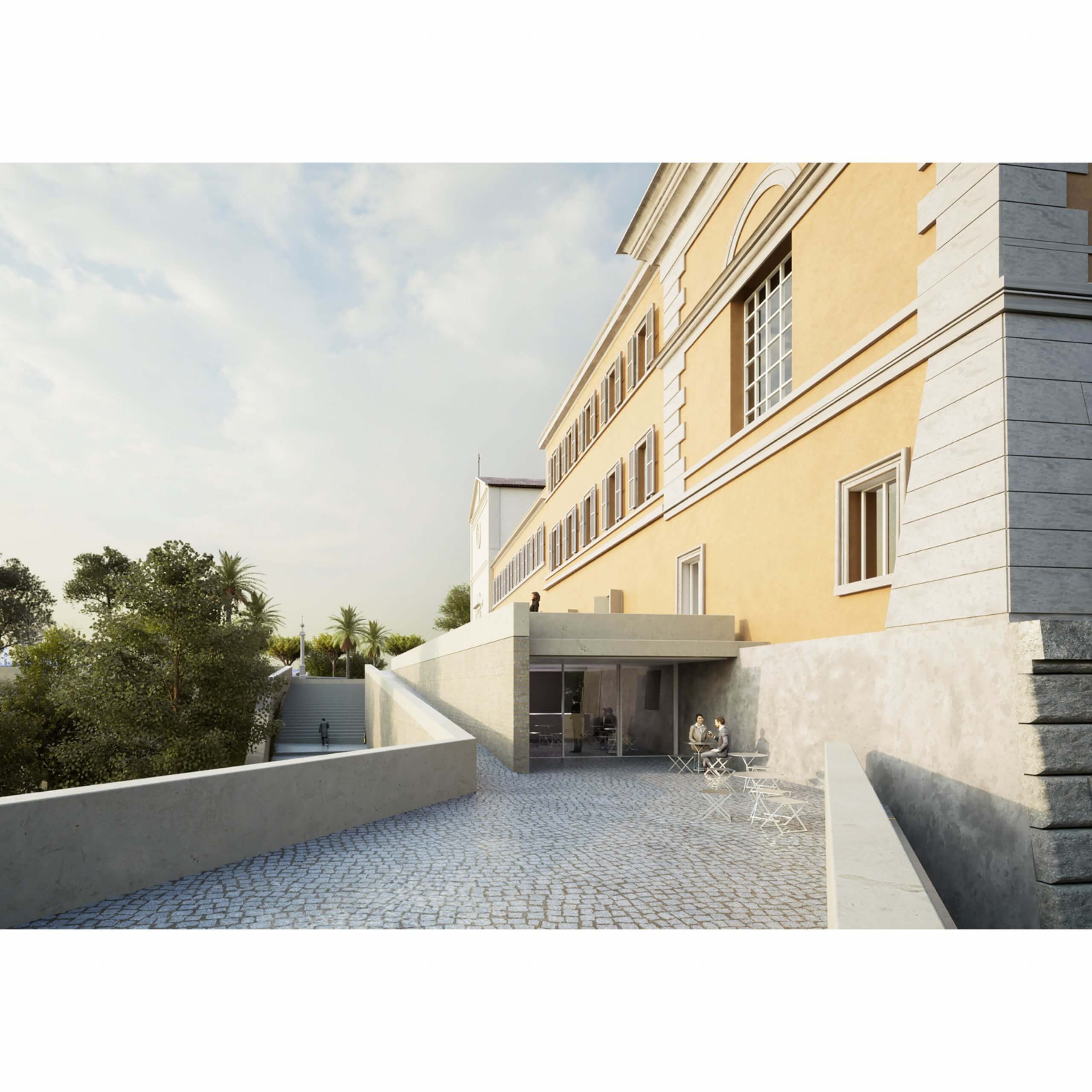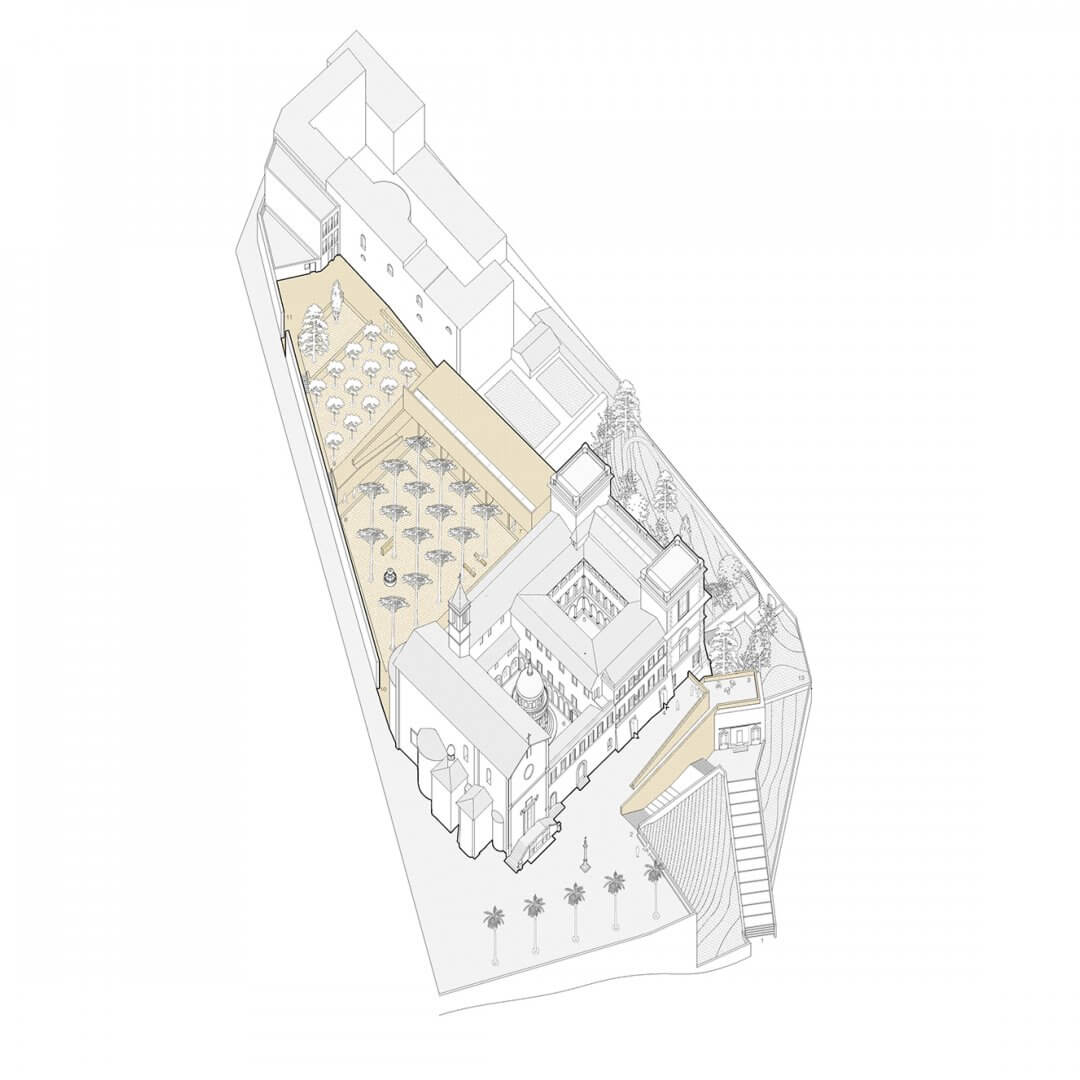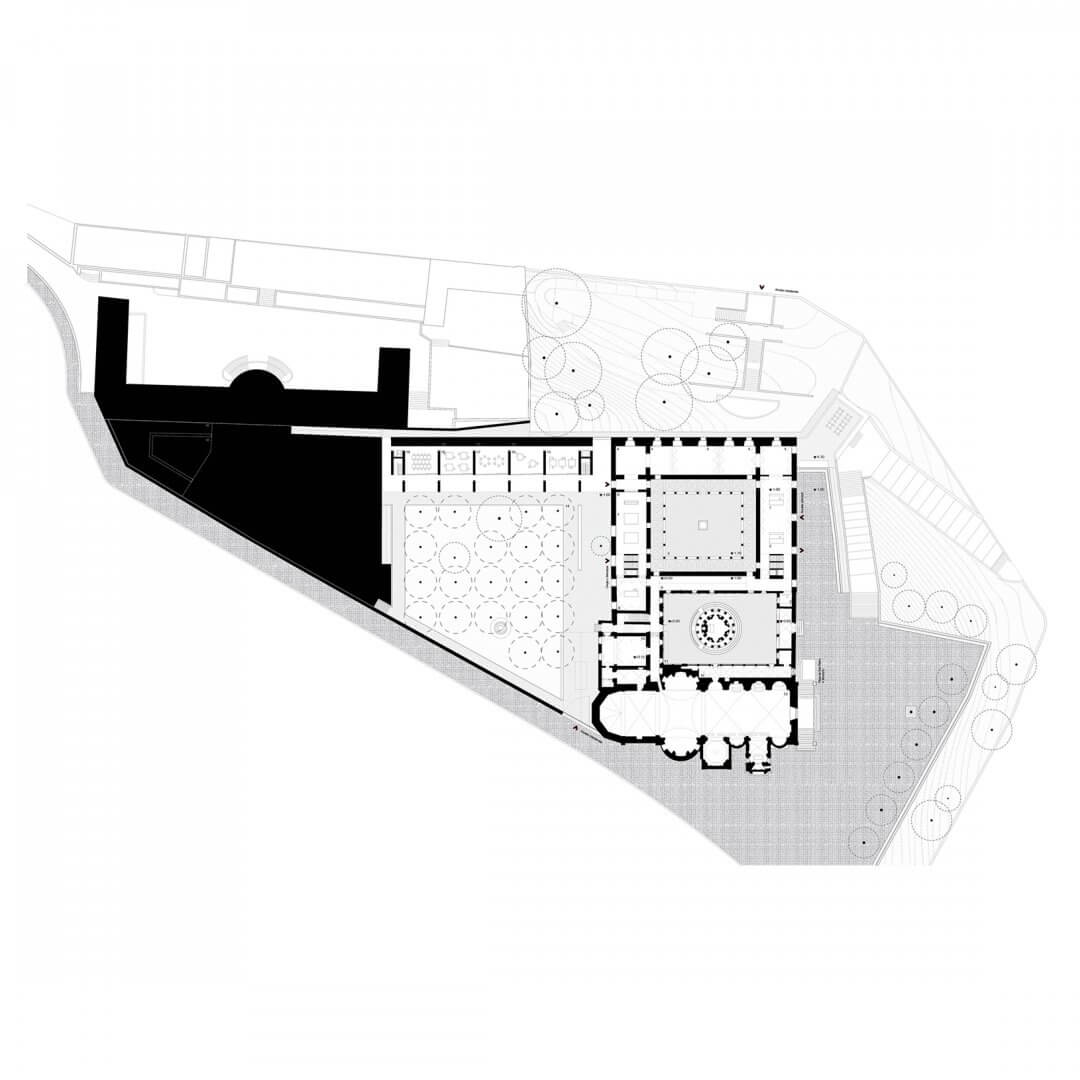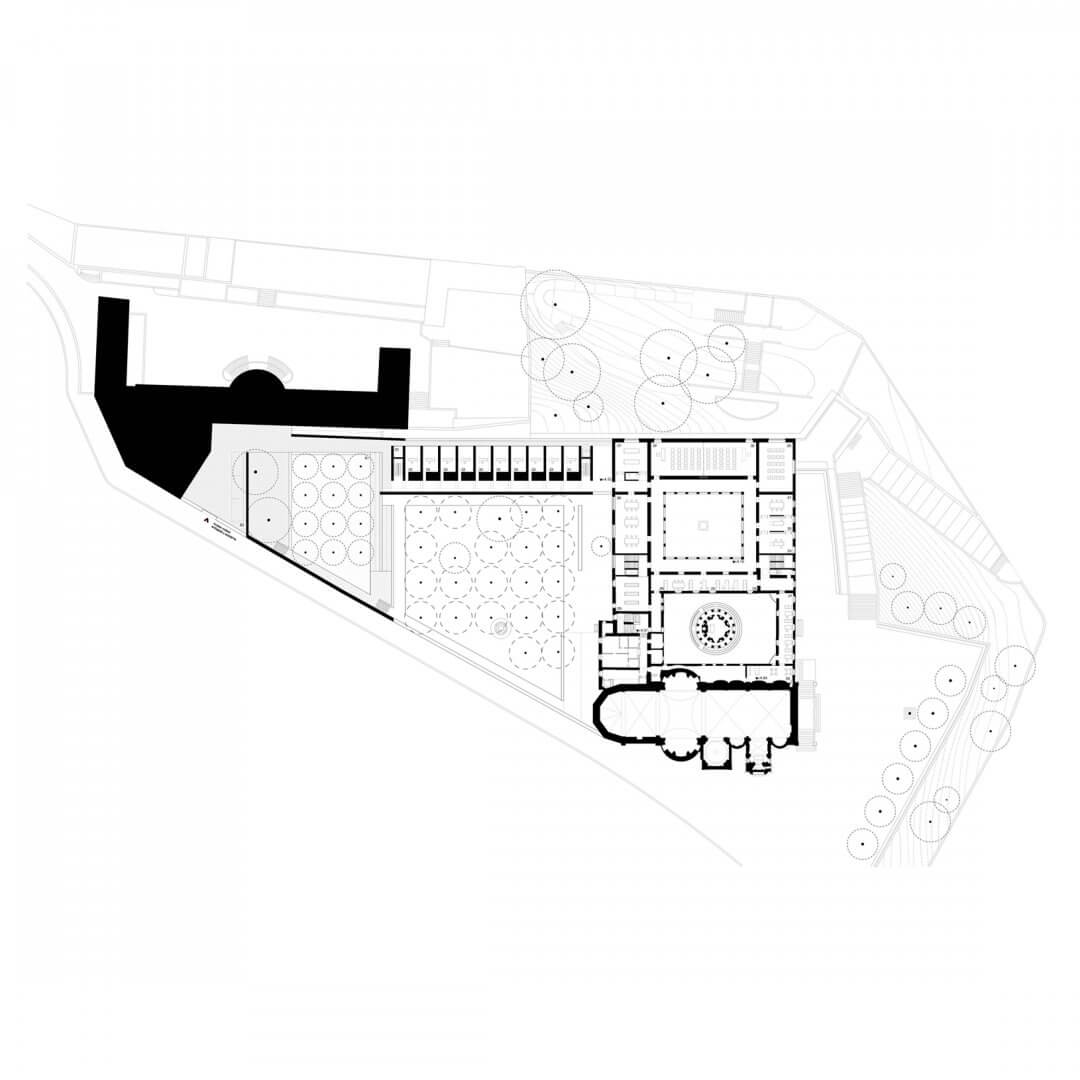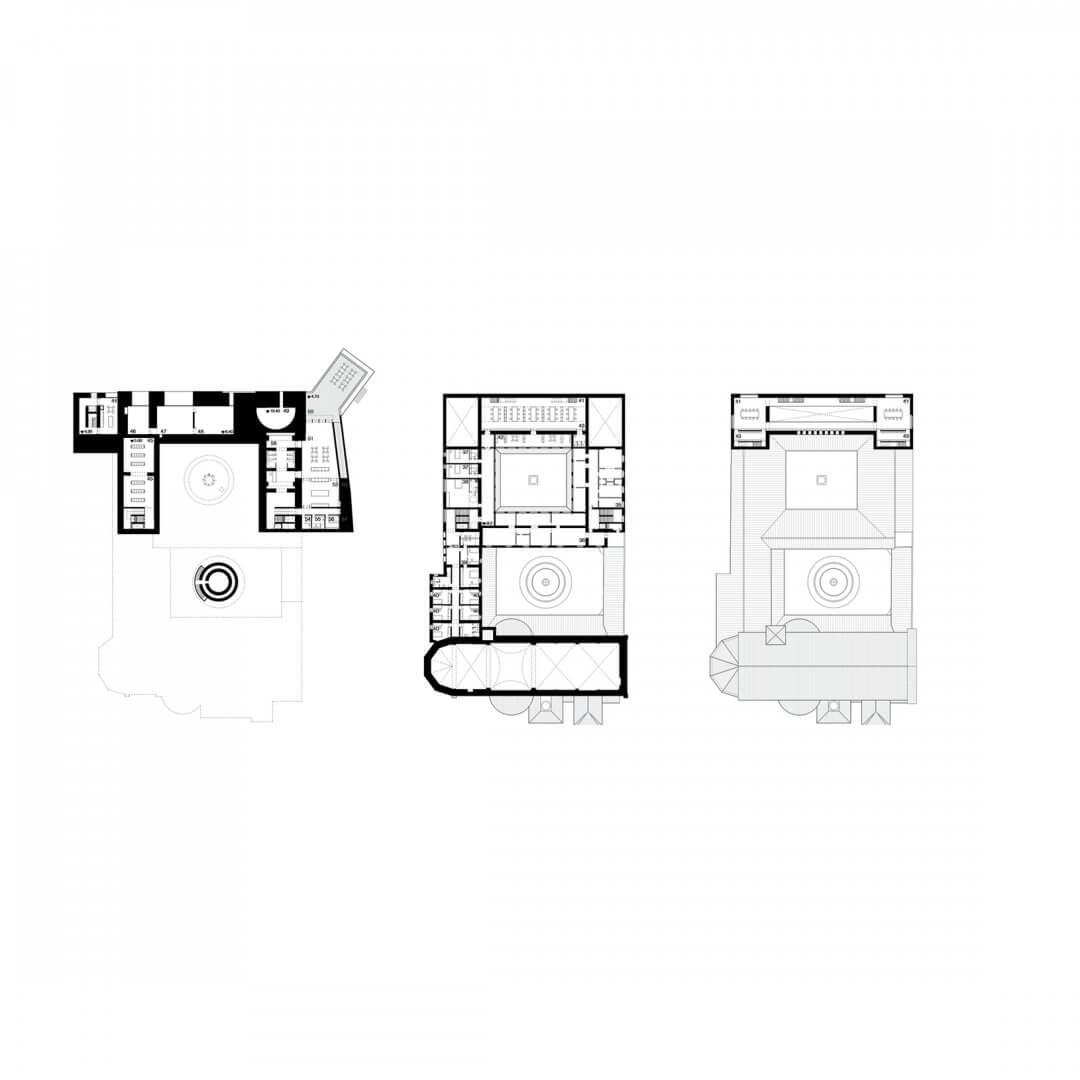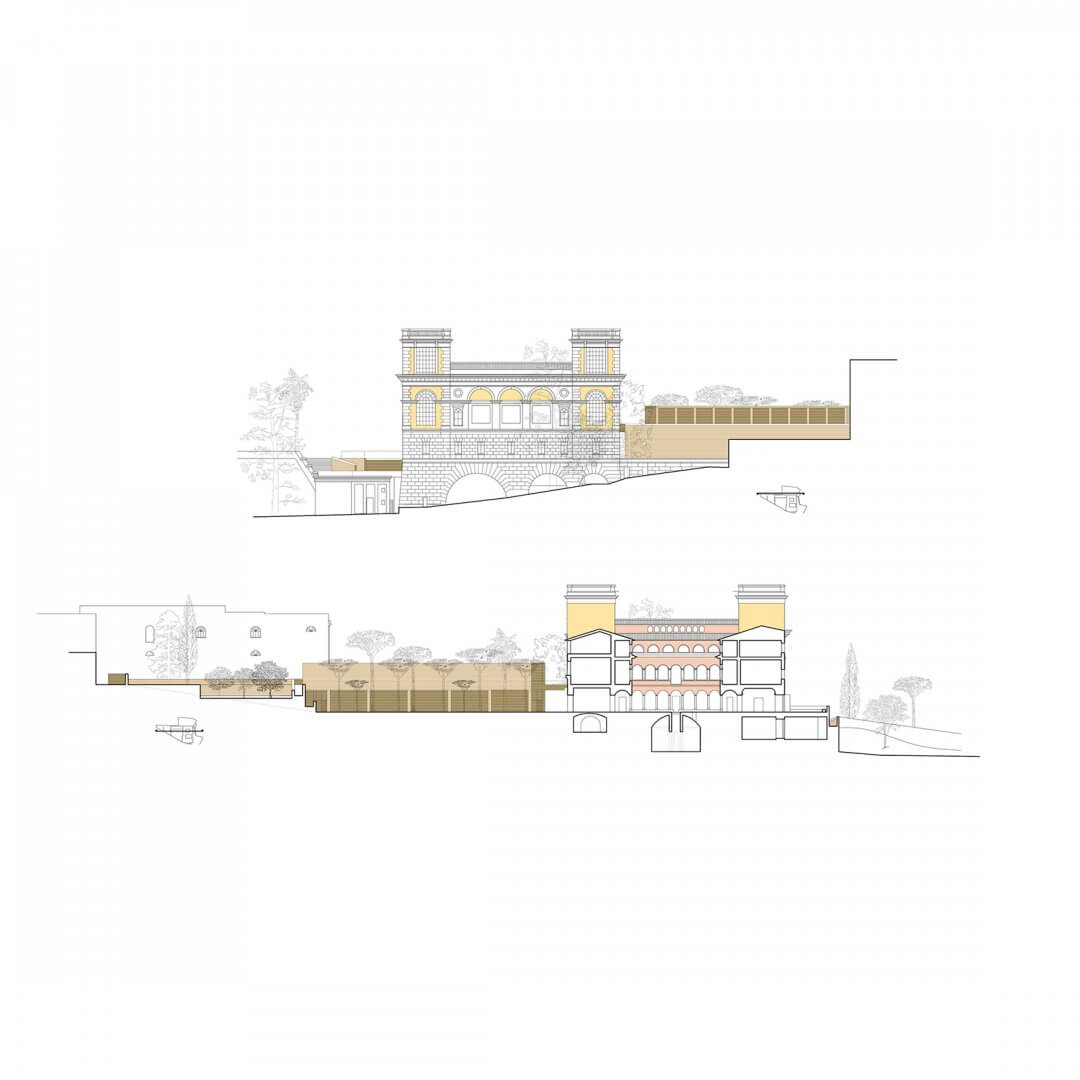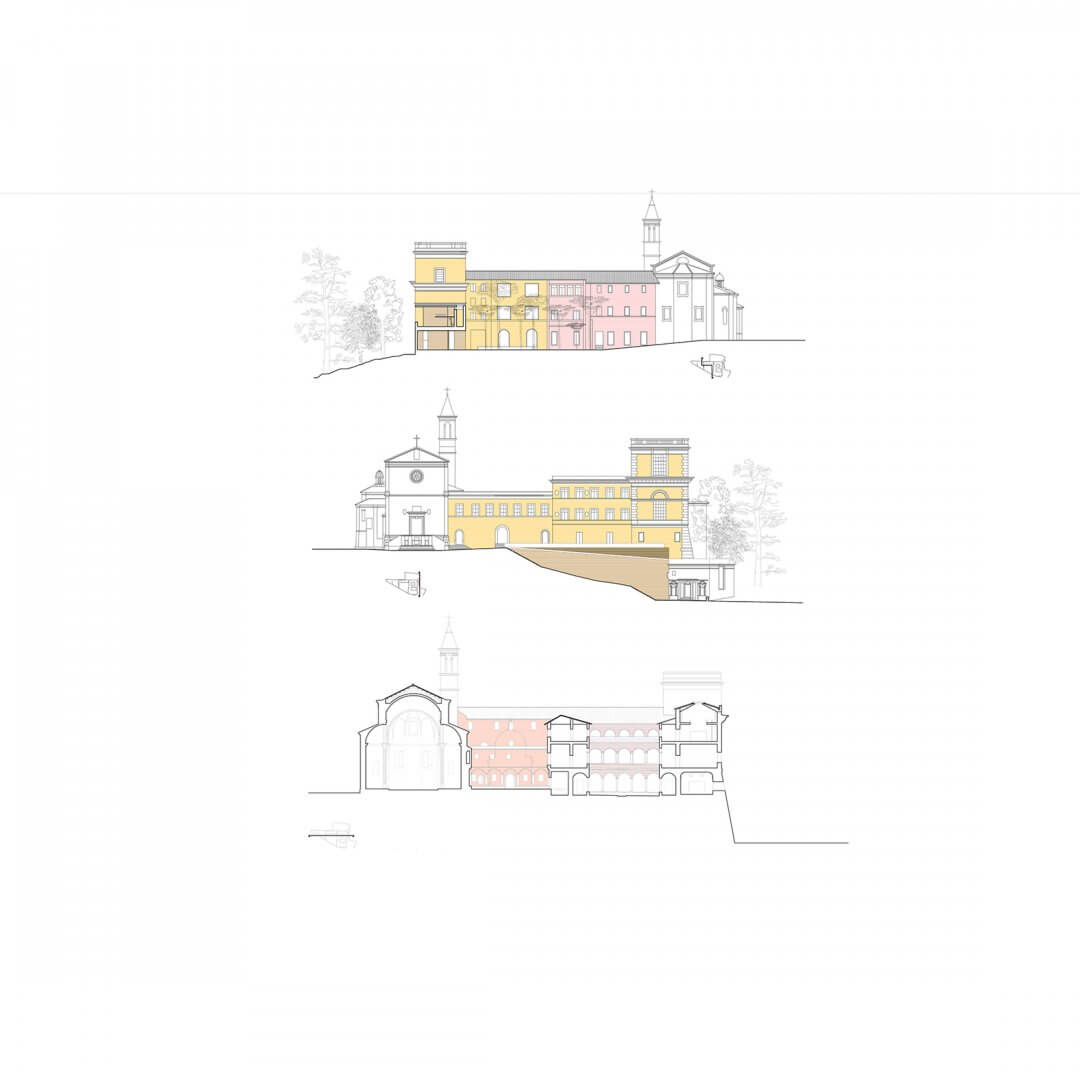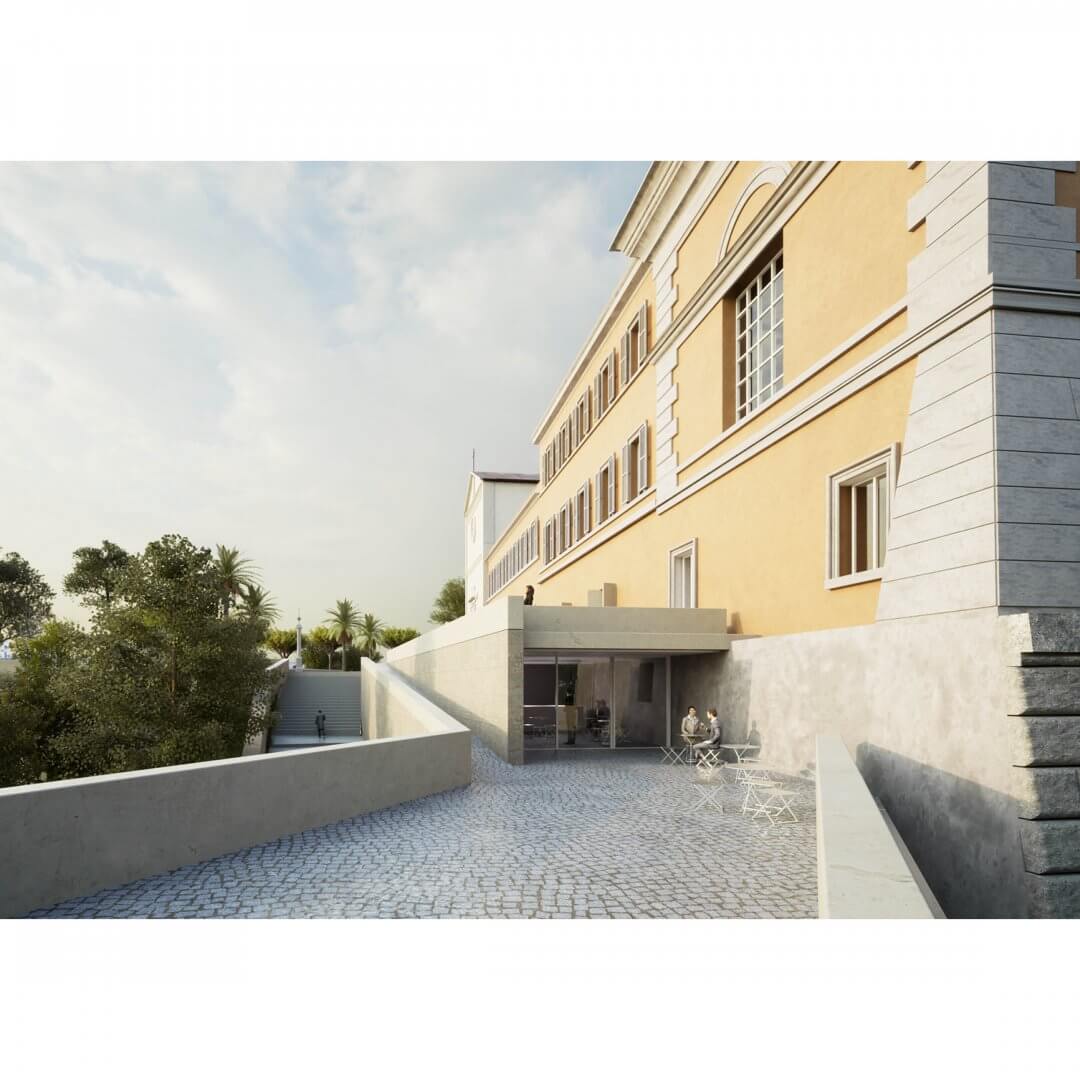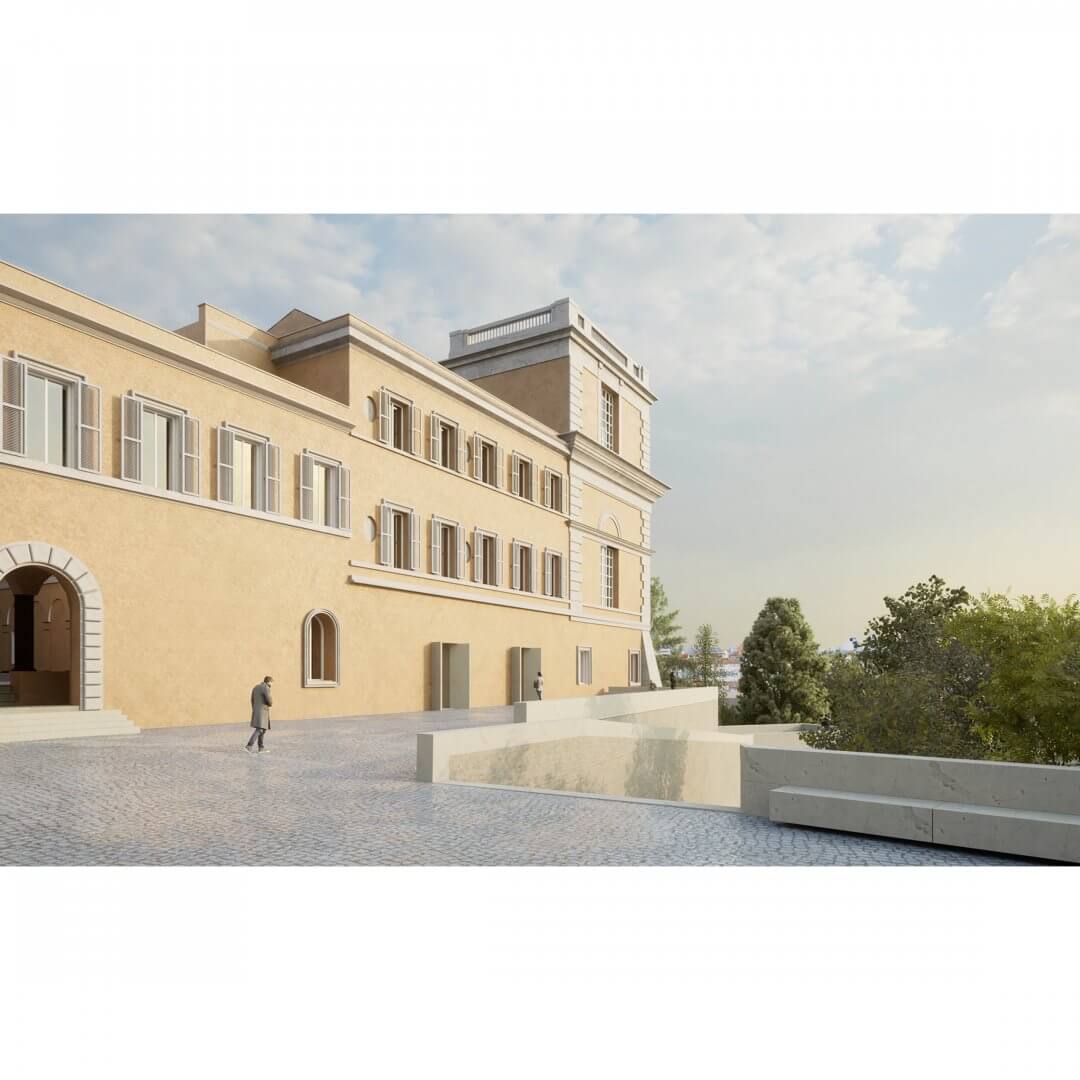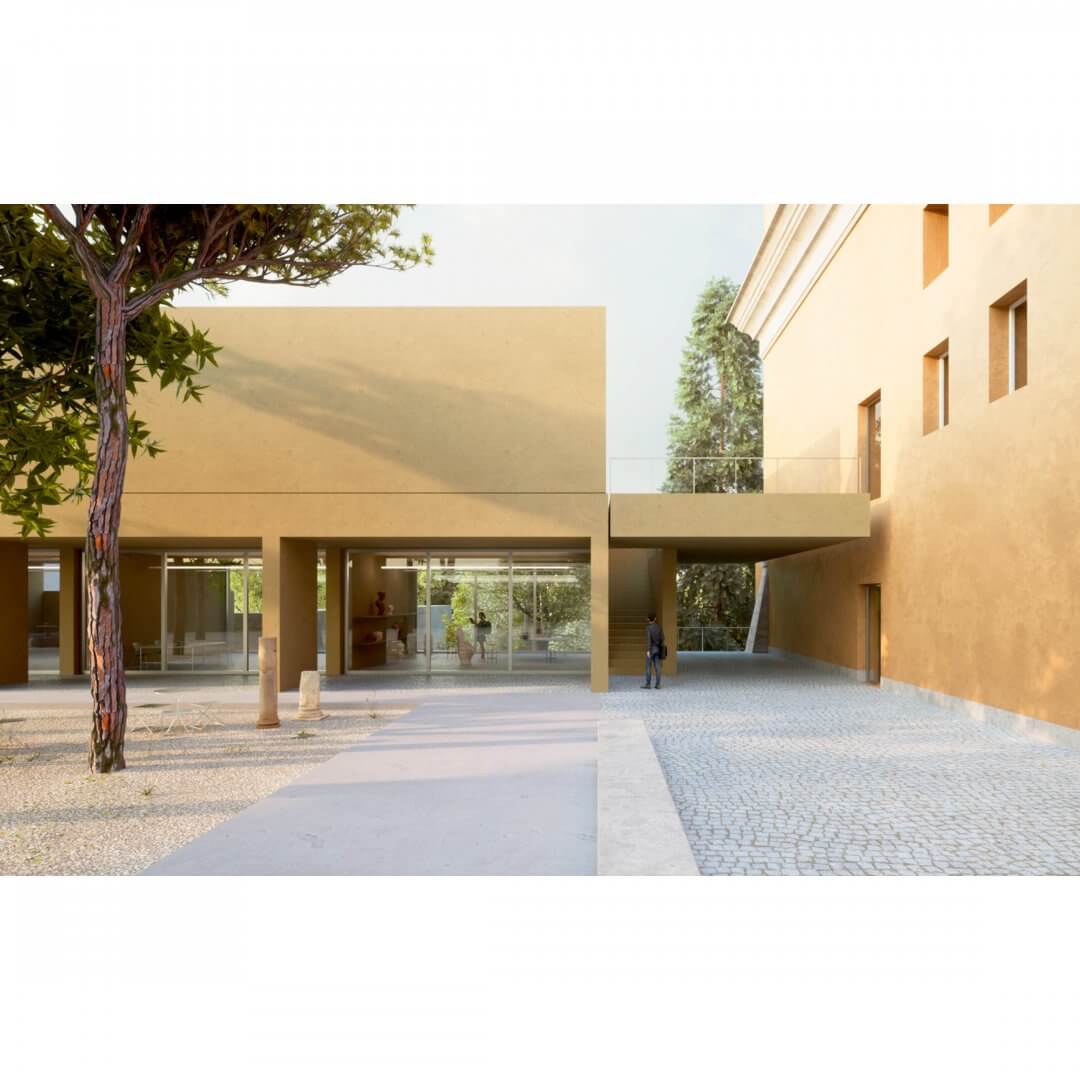KAL A+KRI+Adrián Paterna Ferrón+Jorge Palomero
The main aspiration of Mica áurea is to reformulate and modernize the spaces of the Royal Academy of Spain in Rome, updating the public spaces and gardens of the complex.
The monumental complex of San Pietro in Montorio has left, over the centuries, a characteristic imprint, written in the historical plans of Rome and responding directly to the morphological and urban traces of the Gianicolo hill. The coexistence since 1873 of two distinct uses, conventual and academic, as well as the successive partial modifications to the complex, has given rise to a differentiated variety of superimposed architectural elements that define each of its spaces in a unique way. The present proposal has as its main aspiration to reformulate and modernize the spaces of the Royal Academy of Spain in Rome, in addition to incorporating the public spaces and gardens surrounding the complex. The project is developed in two phases:
PHASE I
A new viewpoint inside the Accademia. Recovery of the original facade overlooking the square of San Pietro in Montorio, dignifying the original access of Bramante’s pavilion. Open the access space to the complex, replacing the volume designed in 1926 by Salvatore Rebecchini and Jaime Blay, connecting and recovering the original views of Rome. A new accessible topography for the complex. The morphology of Mount Gianicolo conditions the conception of the routes and the transition between the spaces and uses of the complex. This is taken as an opportunity to organize and design this new floor plan that homogenizes the existing differences in level inside and outside the building. A new elevation is established from Piazza San Pietro in Montorio that connects through accessible routes the entire first floor of the Academy to the interior of the plot. Reorganization and enhancement of the monumental complex. The complex is reorganized by concentrating the routes and uses that are currently lack of unity and appropriate order: Uses as differentiated as those of residents, visits to the historical complex, museums, administration, etc. The complex is renovated focusing special attention on skylights, roofs, and facades repairing the damages and pathologies present in a generalized manner.
PHASE II
An efficient engine for the future of the Academy. Restructuring of the pavilion and enlargement of the workshops and studios of the garden consolidated by José Ignacio Hervada in 1942, giving value to a new flexible and versatile configuration that can meet the new needs of the residents and academic programs of the Institution. The terraces of Monte Aureo. Following with the strategy of the square of San Pietro in Montorio, a new organization that allows the enjoyment of a landscape proposal is disposed in three different drainage levels. The strategy seeks the incorporation and connection of all the spaces surrounding the historical complex, including the conservation and consolidation of the Romanesque Garden. The chromatic ranges which are perceptible throughoutmuch of Rome, define a harmonious image of the city itself. The diversity of architectural elements in the Accademia boasts the same chromatic richness that invites the new proposal to bring a color in tune. Medieval tradition places San Pietro in Montorio on the hill known as Monte Áureo, after the Mica Aurea, the predominantly golden-colored earth in the immediate vicinity. The golden color of the earth near the Tiber is taken as the basis for integrating the new extension and other wall elements, both ceramic and stone, which will dialogue with the yellow color of the main facades of the Academy.
Authors: KAL A (Miguel Sotos+Sofía Romeo)+KRI (Gonzalo Peña)+Adrián Paterna Ferrón+Jorge Palomero.
Website: kal-a.com + kri.archi
Location: Rome, Italy.
Year: 2022
Competition: Concurso para la Rehabilitación y Ampliación de la Real Academia de España en Roma.
Prize: 3rd prize.
